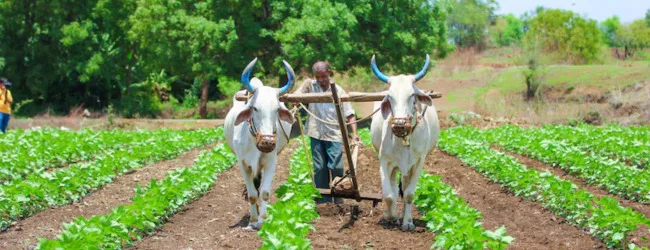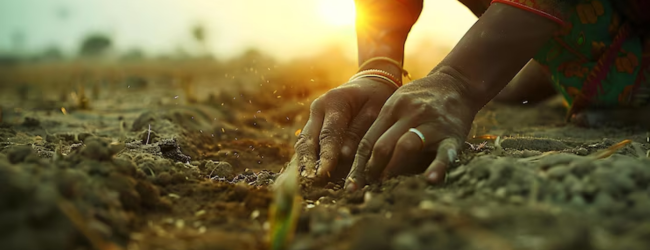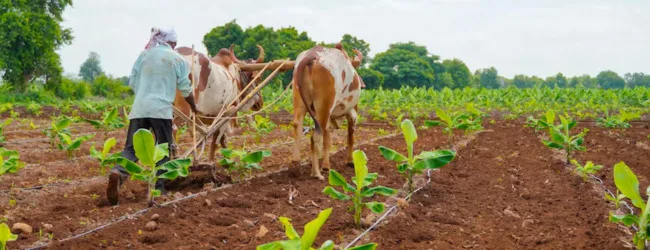Table of contents
- What is Integrated Organic Farming?
- Why Integrated Organic Farming is Important in 2025
- Major Components of Integrated Organic Farming
- Example of an Integrated Organic Farm Layout (1 Acre)
- Income Potential from 1-Acre Integrated Organic Farming (Estimated)
- Benefits of Integrated Organic Farming
- Steps to Start Integrated Organic Farming in India (2025)
- Pro Tips for Successful Integrated Organic Farming
- Government Schemes Supporting IOF in 2025
- Conclusion
- Frequently Asked Questions (FAQs)
In 2025, Integrated Organic Farming has emerged as a game-changer in Indian agriculture, combining organic techniques with mixed farming systems to boost income, enhance soil fertility, and reduce environmental impact. It’s not just about growing crops without chemicals — it’s about building a self-sustaining eco-farm that recycles everything and wastes nothing.
What is Integrated Organic Farming?

Integrated Organic Farming (IOF) is a sustainable agricultural model that combines various components like crops, livestock, poultry, fishery, and organic inputs in a synergistic way. This method reduces dependency on external resources and enhances farm productivity through natural recycling.
💡 Key Principles:
- Zero chemical use
- Closed-loop nutrient cycling
- Integration of multiple farming systems
- Reduced carbon footprint
- Income diversification
Why Integrated Organic Farming is Important in 2025
| Factor | Conventional Farming | Integrated Organic Farming |
|---|---|---|
| Fertility Management | Uses synthetic fertilizers | Uses compost, green manure |
| Waste Utilization | Often discarded | Recycled back into the system |
| Farm Income | Single-source income | Multi-source, diversified |
| Sustainability | Resource-depleting | Resource-conserving |
| Climate Resilience | Low | High due to diversity |
🔸 Noteworthy Point: According to a 2024 ICAR study, farmers practicing IOF saw 32% higher net returns compared to those using only organic monoculture systems.
💡 Pro Tip: If you want to start a Business but have too many doubts, connect with a Business expert from Boss Wallah for guidance – Check Out
Major Components of Integrated Organic Farming

1. Crop Cultivation
- Use of heirloom and organic seeds
- Intercropping and crop rotation to maintain soil health
- Biofertilizers like Rhizobium and Azospirillum
2. Livestock Management
- Cow dung and urine are used for compost and pest repellents (e.g., Panchagavya)
- Goat and poultry for meat, manure, and income
- Avoid antibiotics or synthetic feeds
3. Vermicomposting
- Earthworms convert organic waste into nutrient-rich compost
- Acts as a natural fertiliser and soil conditioner
4. Biogas Plant
- Converts animal dung and kitchen waste into cooking gas
- The slurry is used as a liquid fertiliser
5. Aquaculture
- Fish farming in small ponds
- Water enriched with fish waste is used for crop irrigation
6. Agroforestry
- Integrates trees and shrubs with crops and livestock
- Enhances biodiversity and carbon sequestration
Example of an Integrated Organic Farm Layout (1 Acre)
| Component | Area (sq. meters) | Purpose |
|---|---|---|
| Crops | 3000 | Main income + food security |
| Vermicompost | 100 | Organic manure |
| Poultry Shed | 150 | Eggs, meat, and manure |
| Dairy Unit | 200 | Milk, dung, urine |
| Fish Pond | 200 | Water recycling, fish meat |
| Biogas Plant | 50 | Cooking gas + bio-slurry |
| Trees/Green Belt | 300 | Shade, fruits, carbon sink |
ALSO READ | Who is the Father of Organic Farming? Discovering Sir Albert Howard’s Legacy in 2025
Income Potential from 1-Acre Integrated Organic Farming (Estimated)
| Component | Income (₹/Year) |
|---|---|
| Crops | ₹1,00,000 |
| Poultry | ₹50,000 |
| Dairy | ₹60,000 |
| Fish Farming | ₹30,000 |
| Compost Sales | ₹10,000 |
| Total | ₹2,50,000+ |
🔹 Profit can increase 15–20% yearly by reducing input costs and selling organic produce at premium prices.
ALSO READ | Organic Farming in Sikkim (2025): India’s First Fully Organic State & Its Success Story
Benefits of Integrated Organic Farming
- Self-Sufficient: Minimises external inputs.
- Eco-Friendly: No chemicals or synthetic materials.
- Zero Waste: Every by-product is recycled.
- Climate Resilient: Better withstands weather shocks.
- Higher Profits: Income from multiple sources.
- Employment Generator: Creates rural jobs.
Steps to Start Integrated Organic Farming in India (2025)
Step 1: Choose the Right Land
- At least 1 acre, preferably near a water source
- Avoid industrial or polluted areas
Step 2: Create a Farm Layout
- Divide the land for each component
- Ensure water flow, drainage, and sunlight availability
Step 3: Get Certified (Optional but Valuable)
- Apply for PGS-India (Participatory Guarantee System)
- Helps sell products as certified organic
Step 4: Build Infrastructure
- Shed for animals
- Composting units
- Biogas plant
- Fencing and irrigation
Step 5: Training & Learning
- Join Krishi Vigyan Kendras (KVKs)
- Online courses from MANAGE, IFOAM, or state agriculture universities
Pro Tips for Successful Integrated Organic Farming

- Use Mulching to retain soil moisture
- Keep detailed farm records
- Rotate crops every season
- Sell directly to consumers or organic markets
- Use drip irrigation for water efficiency
- Install solar panels to reduce energy costs
Government Schemes Supporting IOF in 2025
| Scheme Name | Benefit Provided |
|---|---|
| Paramparagat Krishi Vikas Yojana (PKVY) | Financial support for organic farming |
| Rashtriya Krishi Vikas Yojana (RKVY) | Infrastructure and training aid |
| National Mission on Sustainable Agriculture (NMSA) | Technical and financial assistance |
| Agri-Infra Fund | Loans for building compost and biogas units |
Need Expert Guidance?
Starting a business can be challenging, but you don’t have to do it alone! At Boss Wallah, our 2,000+ business experts are ready to provide valuable insights and guidance. Whether you need help with marketing, finance, sourcing, or any other area of any business, our business experts are here to help you succeed
Confused about Which Business to Start?
Want to start your own business but unsure which one to choose? Explore Boss Wallah, where you’ll find 500+ courses by successful business owners, featuring practical, step-by-step guides on starting and growing various businesses.
Find your perfect business idea today
Conclusion
Integrated Organic Farming in 2025 is not just a farming method—it’s a complete philosophy of sustainability, profit, and health. It reduces input costs, maximises resource utilisation, and makes your farm eco-friendly and future-ready. Whether you’re a smallholder or a large-scale farmer, adopting IOF can transform your income while healing the environment.
Frequently Asked Questions (FAQs)
A method combining crops, livestock, aquaculture, and organic techniques to create a zero-waste, self-sustaining farm system.
Yes, farmers can earn ₹2–3 lakh per acre annually through diversified income streams and low input costs.
Certification is not mandatory but highly beneficial. PGS-India is a farmer-friendly option.
You can start with as little as 0.5 to 1 acre.
Krishi Vigyan Kendras (KVKs), MANAGE, and various NGOs offer hands-on training programs.
Yes, with innovations like rooftop gardens, vertical farming, and aquaponics.
Pulses, vegetables, turmeric, and millets grow well alongside livestock and fish.
Use natural pesticides like neem oil, cow urine sprays, and companion planting.
Initial setup cost, lack of awareness, and market linkage are common hurdles.
Yes. It increases biodiversity, improves soil carbon, and reduces reliance on chemical fertilisers.


